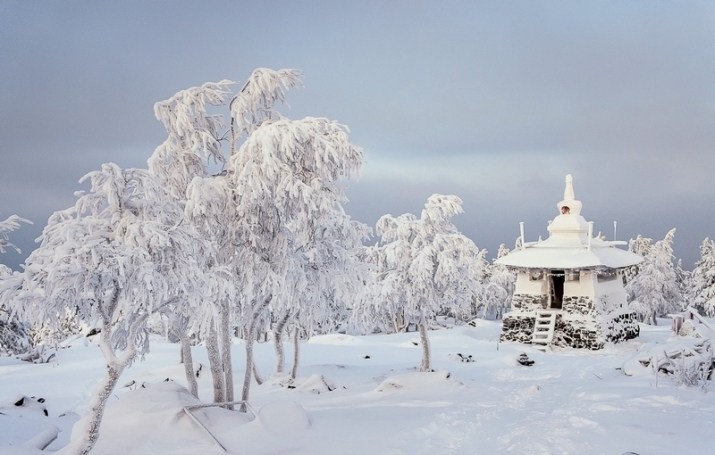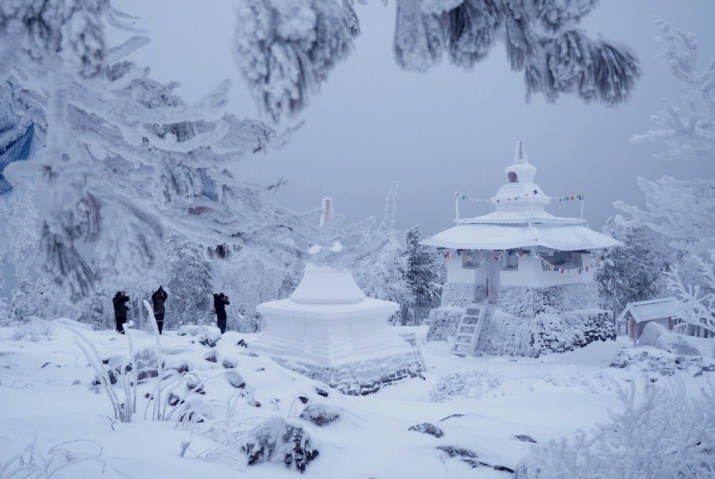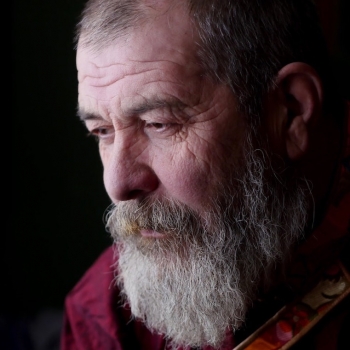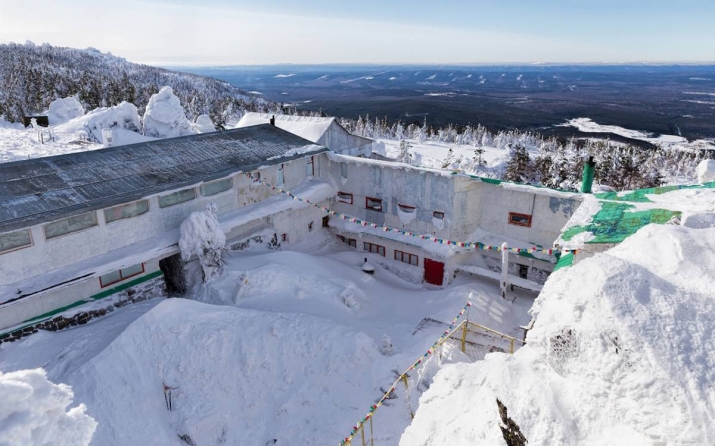NEWS
Mining Giant Threatens Future of the World’s Most Northerly Buddhist Monastery
By Craig Lewis
Buddhistdoor Global
| 2017-01-16 |  Shad Tchup Ling's days as the most northerly Buddhist monastery in the world may be numbered. From slavorum.org
Shad Tchup Ling's days as the most northerly Buddhist monastery in the world may be numbered. From slavorum.orgNestled deep within the frigid embrace of Russia’s Northern Ural mountains, Shad Tchup Ling is probably the most northerly Buddhist monastery in the world. However, this unique Buddhist outpost’s days may be numbered as it stands upon a substantial metal ore deposit that has been claimed by one of Russia’s most influential oligarchs. Sounding a note of finality, after years of delays, the Russian authorities have threatened to raze the monastery complex by 1 March.
London-listed Evraz, a multinational steelmaker and mining company co-owned by Russian billionaire Roman Abramovich, is actively mining in the region, employing some 6,000 people, and operating several quarries near the monastery. With one of its local mines now being wound down, Evraz asserts that it needs to tap the resources that lie beneath Shad Tchup Ling in order for its operations to remain profitable.
“The buildings on Mount Kachkanar are located directly on the surface of the Sobstvenno-Kachkanarskoe Ore Deposit. According to the law of the Russian Federation, construction of any building and especially residence building above the deposit is forbidden for safety reasons. This matter is within the scope of responsibility of public authorities,” the company has stated. (Radio Free Europe/Radio Liberty)
 Buddhist novices pay their respects at two of the monastery's stupas. Photo by Amos Chapple. From rferl.org
Buddhist novices pay their respects at two of the monastery's stupas. Photo by Amos Chapple. From rferl.orgFounded in 1995, and sitting 888 meters above sea level on top of Mount Kachkara, the monastery, the name of which translates as “place of practice and realization,” is inhabited by a small group of idealistic Buddhists led by the 55-year-old abbot Lama Sanye Tenzin Dokshit, formerly a commander in the Soviet Army named Mikhail Sannikov.
 Abbot Lama Sanye Tenzin Dokshit founded Shad Tchup Ling in 1995. Photo by Amos Chapple. From rferl.org
Abbot Lama Sanye Tenzin Dokshit founded Shad Tchup Ling in 1995. Photo by Amos Chapple. From rferl.orgThe one-time soldier saw heavy action during the 1979-89 occupation of Afghanistan that left him wounded physically and emotionally, haunted by his wartime experiences for years afterward. After leaving the military in 1987, Sannikov traveled to the Russian republic of Buryatia in 1989, where he studied Buddhism for six years. In those days, Sannikov recalled, Buddhism in Russia was almost exclusively practiced in the east of the country: “I thought it was strange; we have good people in central Russia, too. My teacher said, ‘Well, go there, then.’” After his teacher drew the silhouette of a mountain, Sannikov related, “My task was clear.” (Radio Free Europe/Radio Liberty)
The temple Sannikov founded as a wooden shack has grown over more than 20 years into a monastic complex that includes living quarters, a communal kitchen, a sauna, stupas, and a six-meter fiberglass statue of the Buddha, which was completed in the summer of 2016. The monastery is now home to eight full-time residents as well as several regular community members from the nearby mining town of Kachkanar. According to Sannikov, anyone can live in the monastery “as long as they’re good people” and are willing to abide by the monastery’s rules and daily schedule, which includes daily group meditation from 7–8am and five hours of work per day. (Radio Free Europe/Radio Liberty)
Despite the imminent threat of demolition, Sannikov and the other residents remain defiant. Ignoring official requests to remove the monastery, they continue to expand the complex, with plans to eventually open a school of Buddhism.
Thirty-year-old Yulia Gasheva, a hotel receptionist and one of the community’s regular part-time members, cheerfully works 16-hour days while at the monastery serving up mostly simple dishes of buckwheat and pasta. “There’s a peace here that I just never find in normal life,” she noted.
 Despite official requests to remove the monastery, the residents have continued to expand the complex. From russia-insider.com
Despite official requests to remove the monastery, the residents have continued to expand the complex. From russia-insider.com


















